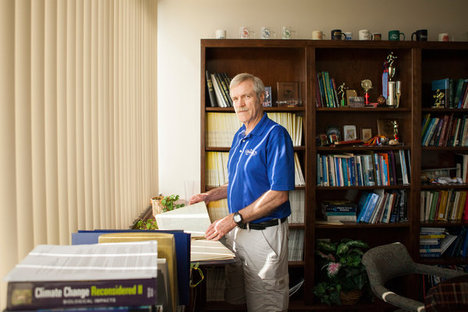This is a big deal because cooking food allows us humans to spend a lot less energy digesting our food, which allows a lot more energy to be used by the brain. So one theory is that the cooking technology allowed humans to eventually develop cognitive abilities superior to other primates.
(p. A3) . . . scientists from Harvard and Yale found that chimps have the patience and foresight to resist eating raw food and to place it in a device meant to appear, at least to the chimps, to cook it.
. . .
But they found that chimps would give up a raw slice of sweet potato in the hand for the prospect of a cooked slice of sweet potato a bit later. That kind of foresight and self-control is something any cook who has eaten too much raw cookie dough can admire.
The research grew out of the idea that cooking itself may have driven changes in human evolution, a hypothesis put forth by Richard Wrangham, an anthropologist at Harvard and several colleagues about 15 years ago in an article in Current Anthropology, and more recently in his book, “Catching Fire: How Cooking Made Us Human.”
He argued that cooking may have begun something like two million years ago, even though hard evidence only dates back about one million years. For that to be true, some early ancestors, perhaps not much more advanced than chimps, had to grasp the whole concept of transforming the raw into the cooked.
Felix Warneken at Harvard and Alexandra G. Rosati, who is about to move from Yale to Harvard, both of whom study cognition, wanted to see if chimpanzees, which often serve as stand-ins for human ancestors, had the cognitive foundation that would prepare them to cook.
. . .
Dr. Rosati said the experiments showed not only that chimps had the patience for cooking, but that they had the “minimal causal understanding they would need” to make the leap to cooking.
For the full story, see:
JAMES GORMAN. “Chimpanzees Would Cook if Given Chance, Research Says.” The New York Times (Weds., JUNE 3, 2015): A3.
(Note: ellipses added.)
(Note: the date of the online version of the story is JUNE 2, 2015, and has the title “Chimpanzees Would Cook if Given the Chance, Research Says.”)
The academic article discussed in the passages quoted above, is:
Warneken, Felix, and Alexandra G. Rosati. “Cognitive Capacities for Cooking in Chimpanzees.” Proceedings of the Royal Society of London B: Biological Sciences 282, no. 1809 (June 22, 2015).


